The Recovery Strengthens
April 19, 2021
The highlights:
• The Bay Area added 50,100 jobs between January and March 2021 .and the regional unemployment rate fell from 6.6% to 5.9%. Job gains were led by the San Francisco and San Jose metro areas.
• The U.S, and Bay Area economic outlook has been upgraded by the $1.9 billion COVID relief package that has so far resulted in growth in retail sales and the ISM manufacturing and services indices.
• The downward revisions in the Bay Area were comparable in % terms to those statewide. However, the Bay Area and state have now recovered a much smaller share of jobs lost compared to the nation.
• Bay Area growth should accelerate now with more businesses reopening including some in-person capacity at sports and tourist venues.
• The long-term Bay Area economic challenges remain with only slow progress on housing, transportation and economic competitiveness, challenges at the front of the Bay Area Council policy agenda.
Job Growth Accelerated in February and March
The Bay Area added 50,100 jobs in the past two months led by a gain of 15,900 in the San Jose metro area. The San Francisco metro area added 16,200 jobs but by March had recovered only 22.9% of the jobs lost between February and April 2020. The napa, Vallejo and San Rafael metro areas had the largest % job recovery by March 2021.
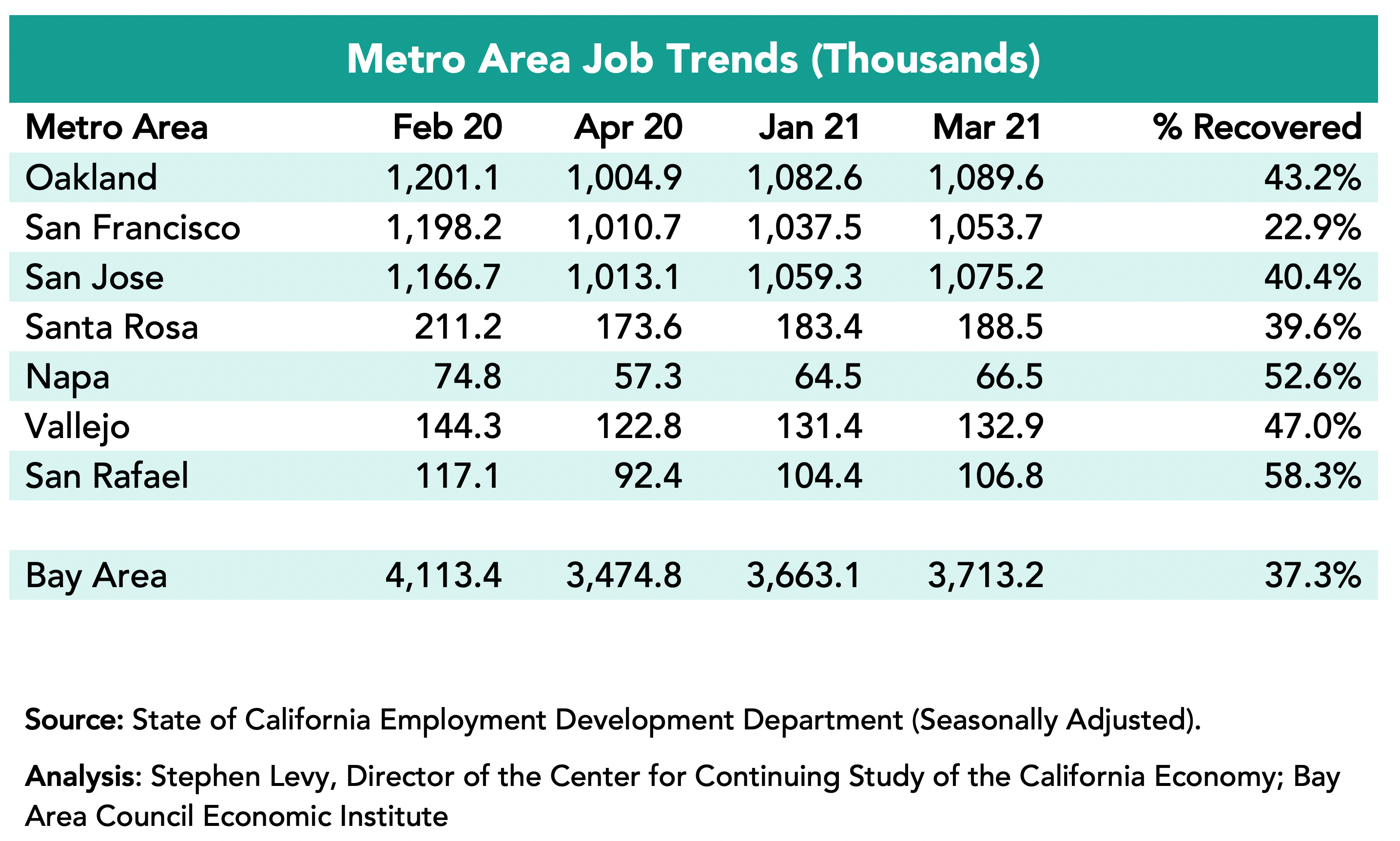
The Bay Area Had Recovered Just 37% of Lost Jobs by March 2021
In March 2021 the Bay Area had recovered 37.3% of the jobs lost between February and April 2020 up from 29.4% in January. The state had recovered 43.7% up from 34.0% while the nation had recovered over half (62.4%) of lost jobs up from 55.4%. The cause of low job recovery in the region and state was the extent and duration of activity restrictions compared to elsewhere in the nation.
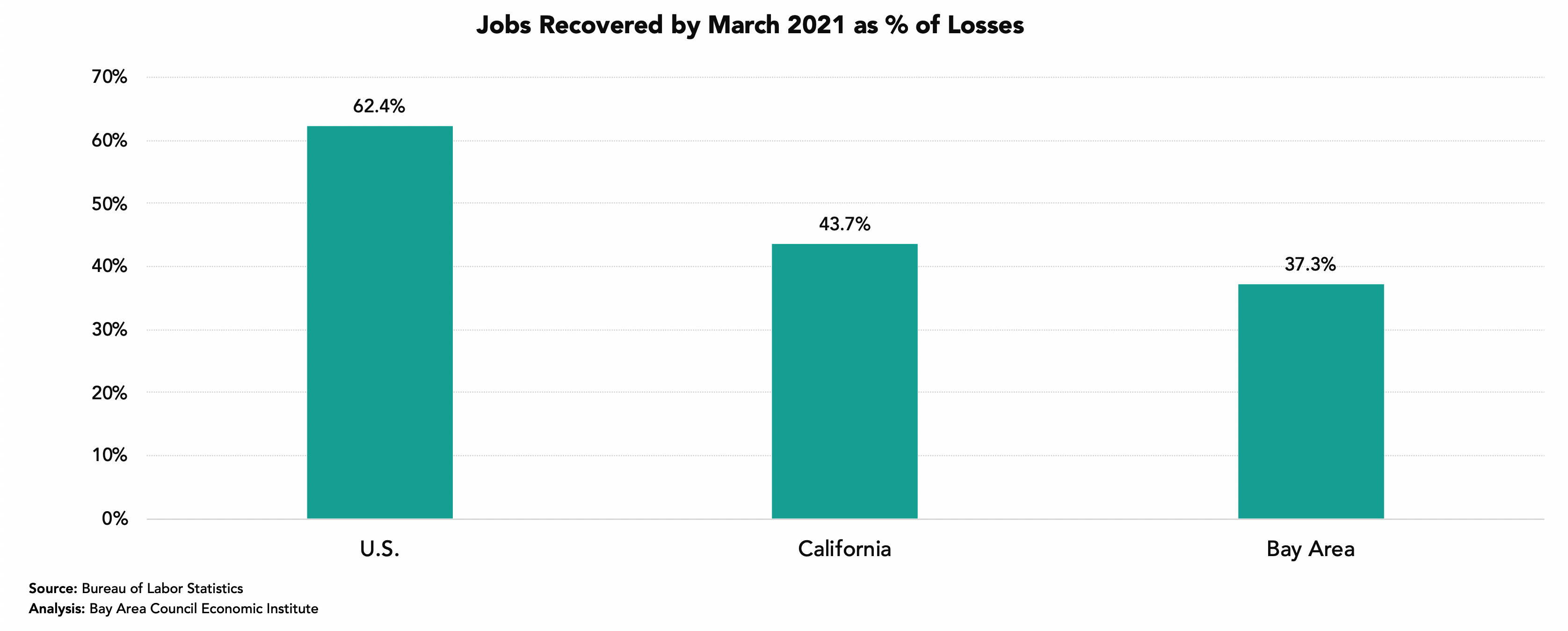
Unemployment Rates Fell to Below 6% in the Region
The lowest rates were in the San Rafael metro area (4.8%) followed by the San Francisco and San Jose metro areas (5.2%) in March 2021.
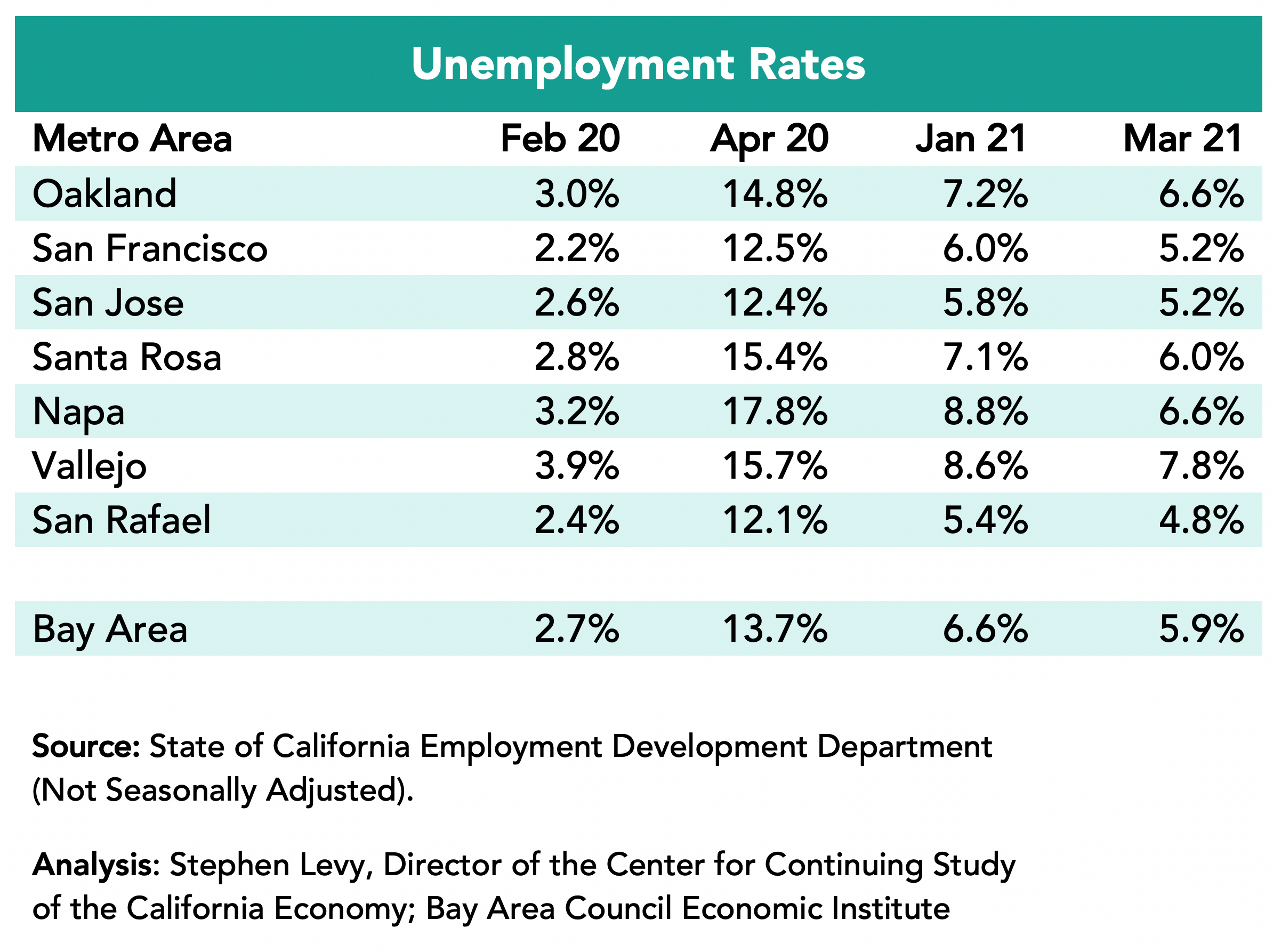
Labor Force Losses Were Added to the Poor Job Performance
The Bay Area labor force shrank by more than 200,000 between February 2020 and March 2021 as people dropped out of the labor force during the pandemic for a variety of reasons. It is possible some of these residents left the region either for remote work opportunities or as part of the growing trend of out migration to find less expensive housing but data shows that most movers stayed in the Bay Area.
The people leaving the labor force are no longer counted as unemployed so the unemployment rates understate the damage done by the pandemic related activity restrictions.
Industries Were Affected Differently
The Information sector actually added a small number of jobs compared to before the pandemic hit. On the other hand, the Leisure and Hospitality sector recovered only 21.5% of lost jobs by March 2021 and much of these in the past two months. The Government and Wholesale Trade sectors have fewer jobs now than in April 2020.
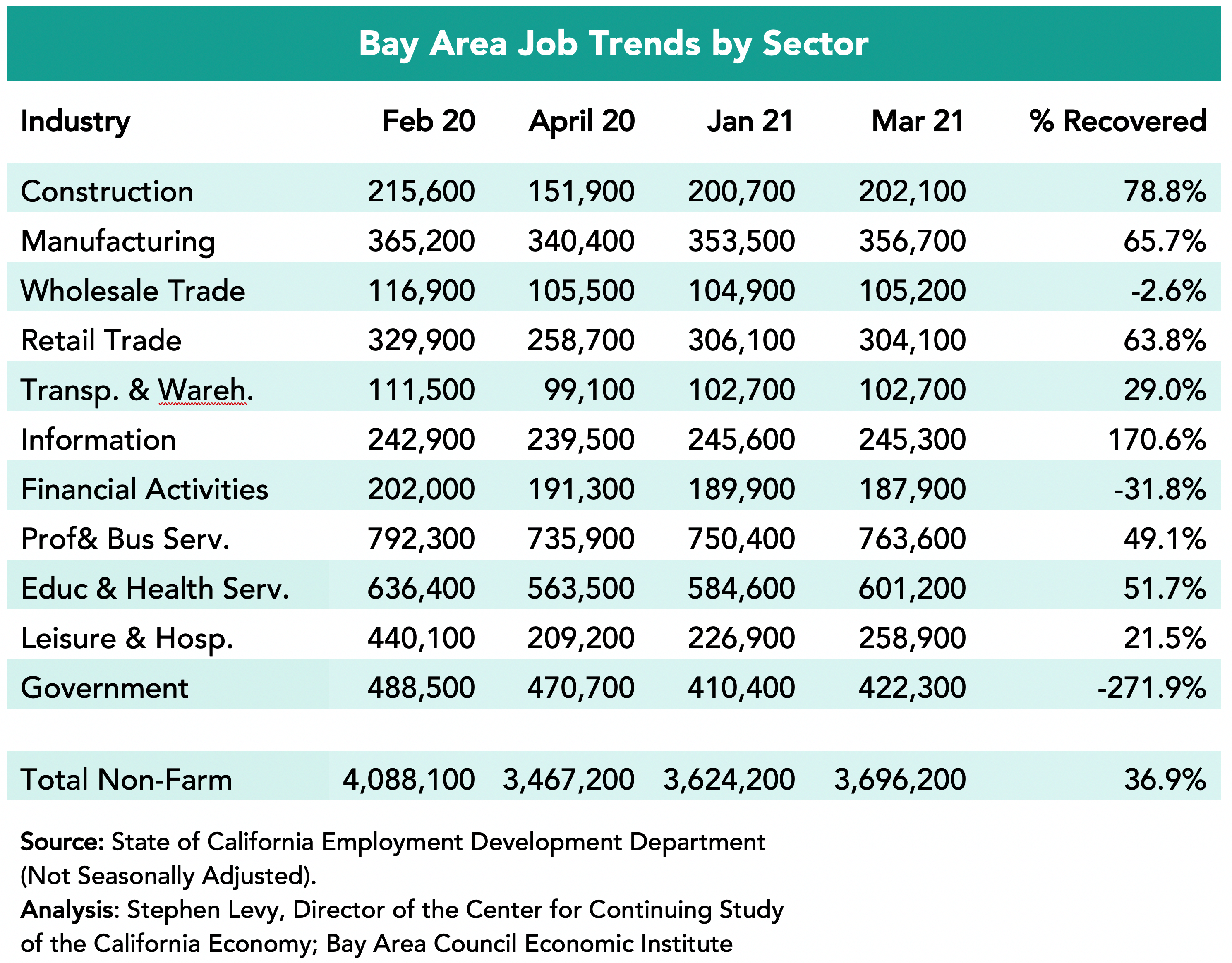
The Look from April 2021
Several factors point to a better economic outlook for the Bay Area. The UCLA March 2021 forecast has the state outpacing the nation in job growth for the next three years led by the Bay Area economy. The recently passed COVID relief package ($1.9 trillion), the new policies on immigration, trade and infrastructure all support the region and state economies.
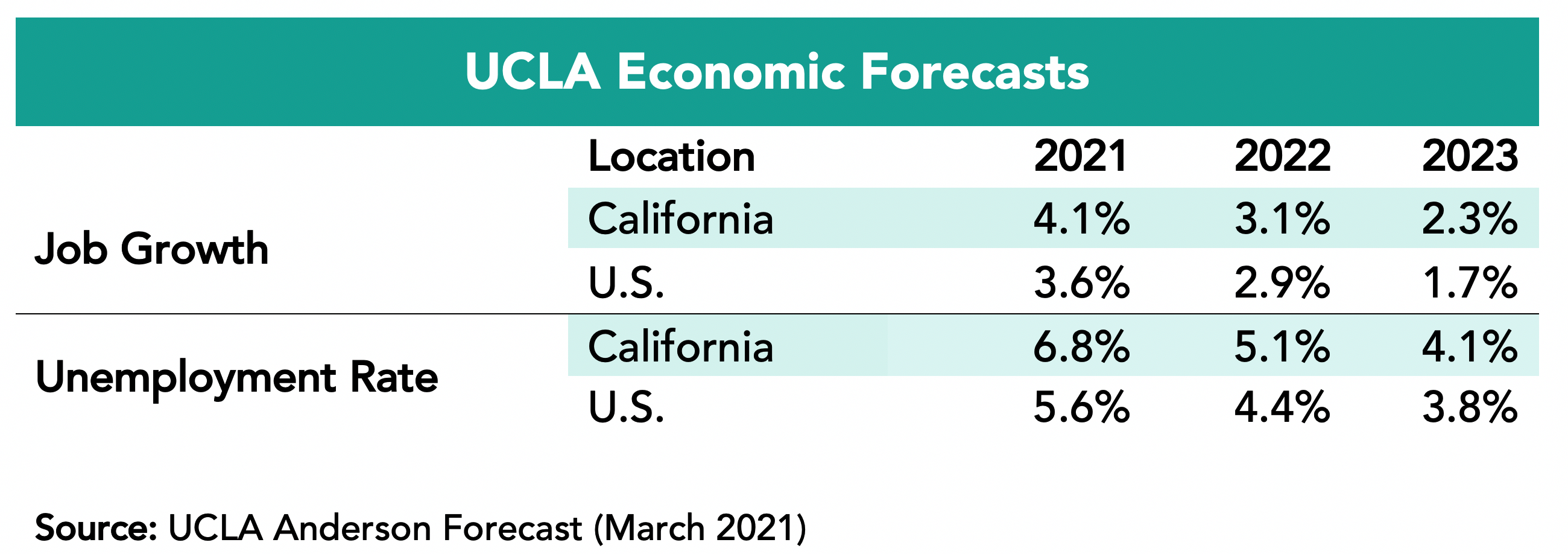
The Bay Area has the 2nd lowest case rate among California regions well below the state and national averages.
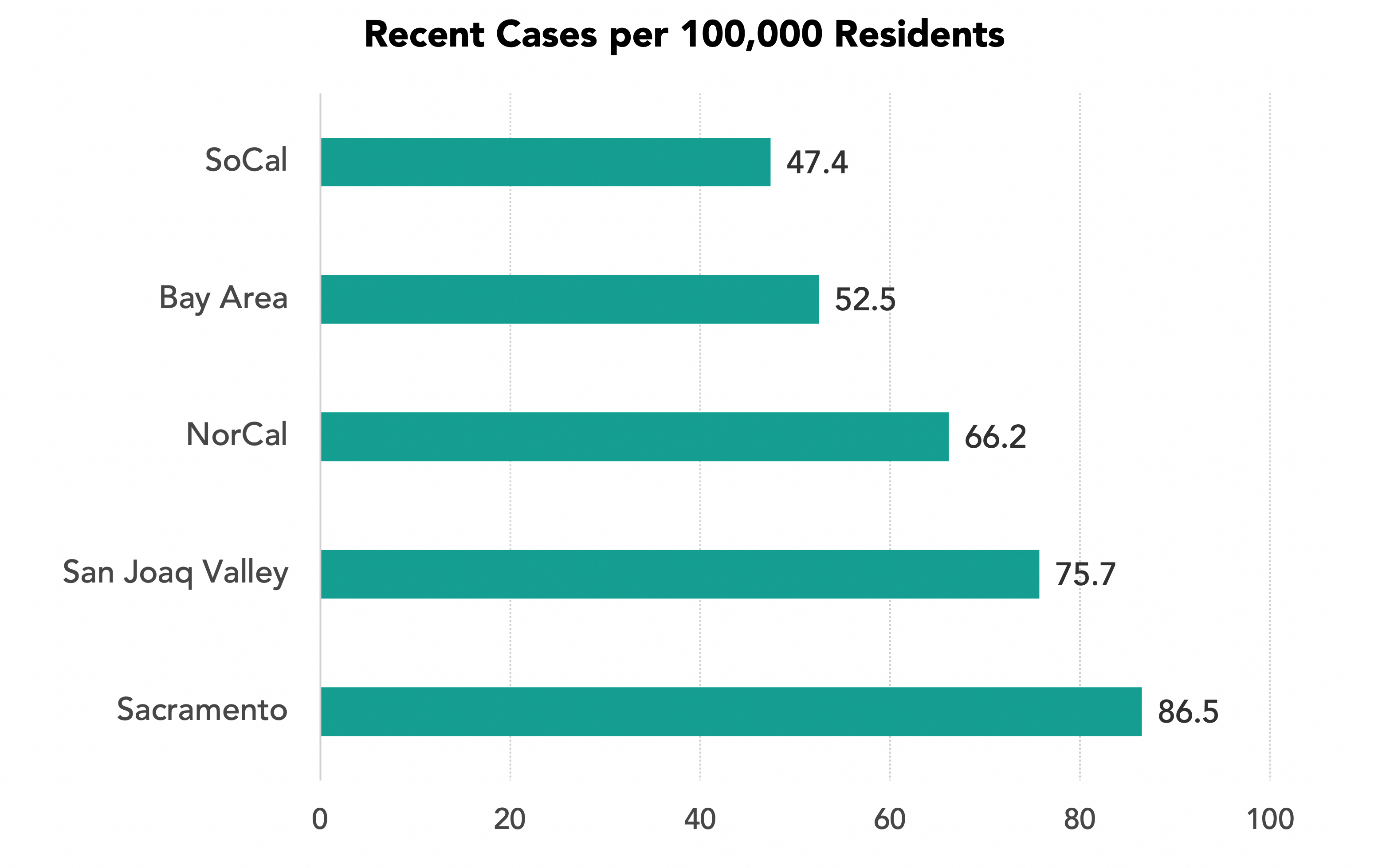
Bay Area counties rank high in fully vaccinated residents among the state’s 58 counties and the vaccination share has been rising by 3% or more in recent weeks.
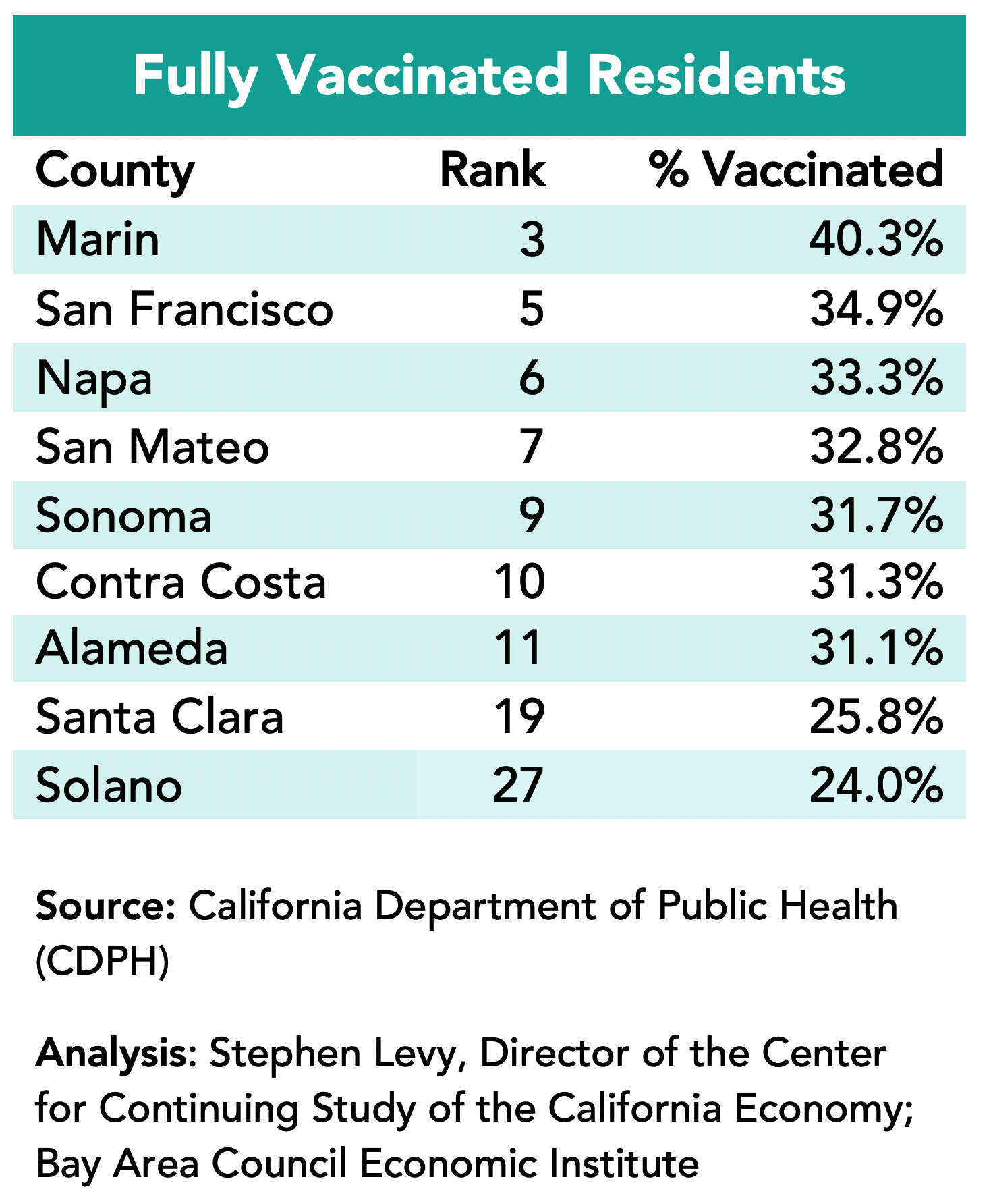
Large Challenges Remain:
Yet, the Bay Area Council warnings about losing our competitiveness remain as housing and mobility challenges are far from solved—the major causes of recent movements of companies and residents.